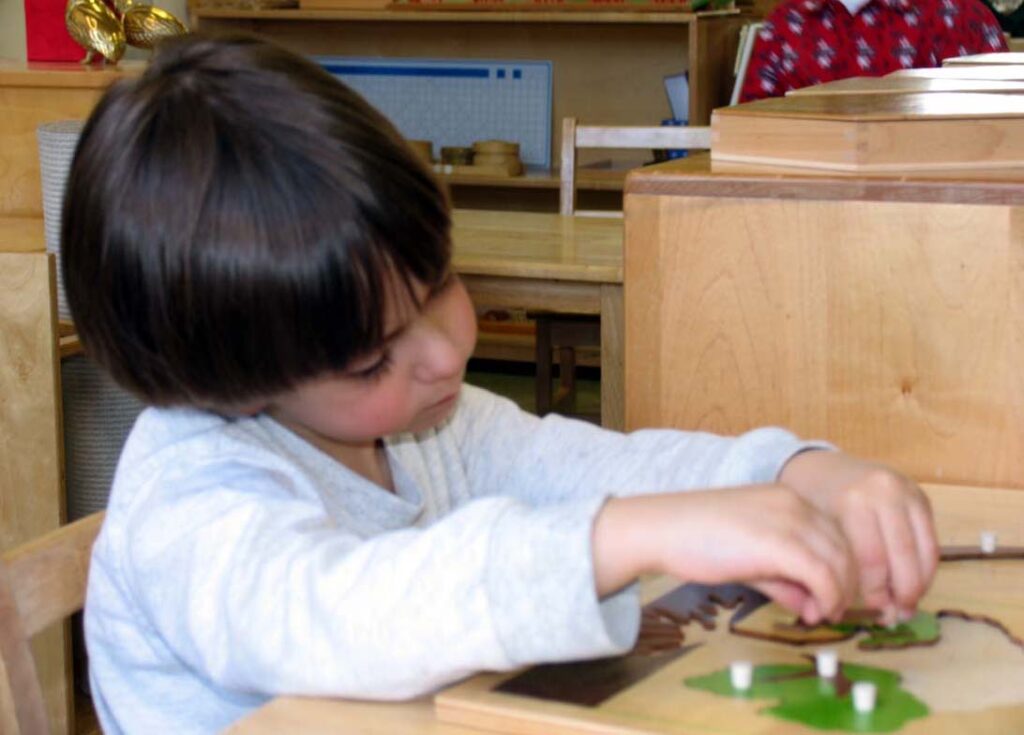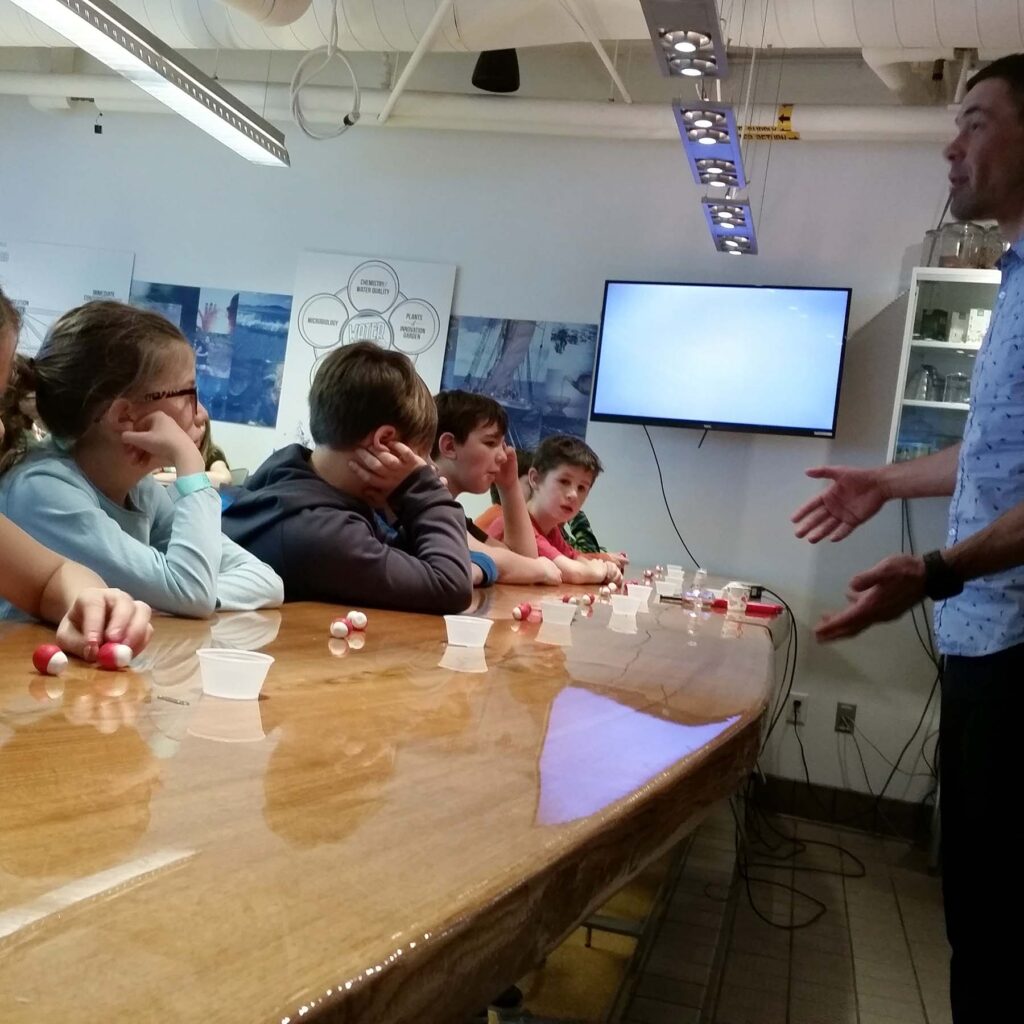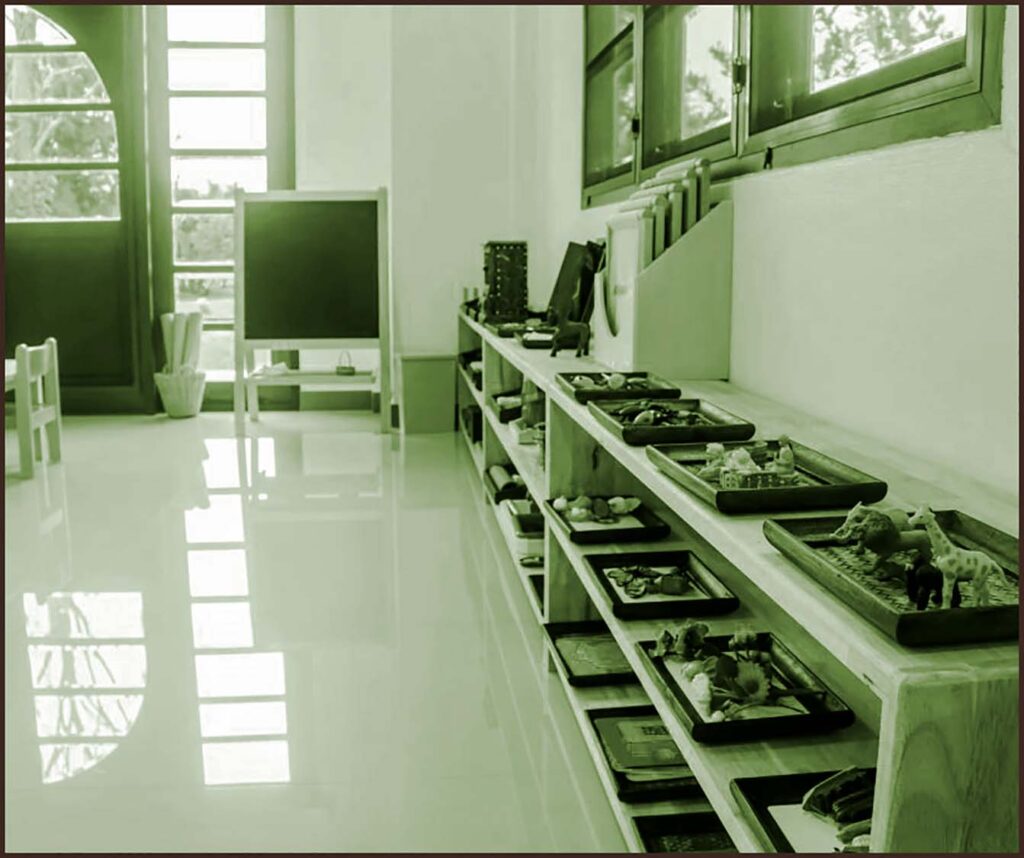Why is the Montessori Work Period So Important?
Montessori Work Cycle
The Montessori work cycle, also known as the work period, is an uninterrupted block of time. During this time children are able to explore the prepared environment and engage with materials of their own choosing. The time is intended to develop basic life skills while enjoying the work they love.
During the Montessori work cycle, adults model the desired behaviors they wish to see in the children. Abundant care is taken to not interrupt them while they are working. This shows them the deference their exploration of the prepared environment deserves. No matter the age, there is always a combination of most students working independently while guides give individual or small group lessons in the classroom.
The Montessori work cycle allows for:
- Expanding focus
- Finding joy within work
- Developing greater independence
- Feeling profound intrinsic satisfaction
Children should be offered the opportunity to self-regulate during the work cycle. For example, allow them to determine if they are hungry and need to have a snack. They might also need to get up and move around a bit before returning to their work.
This is not only an important freedom, but also a crucial aspect of independence that we want to see grow in every child. Therefore, we aim to create an environment with minimal interruptions in order to enable optimal conditions for flourishing.
How long should the Montessori Work Cycle be?
The length of a work cycle varies depending upon the age group and the school. Most classrooms strive for a three hour work period most mornings.
The length of a Montessori work cycle fluctuates depending upon the child’s age. Many classrooms have a three-hour morning work period most mornings. However, this might vary at some schools.
The general guidelines for different age levels is as follows:
- 0-3 years old: 1 to 2 hours per day
- 3-6 years old: 2 to 3 hours most mornings, additional time in the afternoon for 4 and 5 year olds
- 6-12 years old: 2 to 3 hours most mornings, another 2 to 3 hours most afternoons
In my public school experience, all too often leadership and support staff who are not trained in the Montessori method fail to understand how important these blocks of uninterrupted time are. Within public schools, students assigned with individualized educational plans (IEPs) and those who qualify for English language learning services (ELL) are required to work with specialists by state and federal law.
Even within an inclusive district, specialists will often argue these services must be administered outside the classroom. However, as Montessorians, we should continue to advocate for an uninterrupted work cycle. Leadership and support staff need to understand why we should avoid the following:
- Scheduling time with specialists during the middle of a Montessori work cycle
- Pulling children out of the classroom for interventions or remediation
- Addressing undesirable behavior outside of the classroom, unless it is unavoidable
- Stopping mid-cycle to make or listen to announcements
Interrupting the Primary Child at Work
“The fundamental help in development, especially with little children of three years of age, is not to interfere. Interference stops activity and stops concentration.”
– Dr. Maria Montessori
Protecting the child’s work cycle from interruptions is one of a number of Tenants within the Montessori philosophy. This begs the question, does the practice of giving a lesson come in conflict with this?
Dr. Montessori’s first plane of development includes the years from birth to six years old. During the first sub plane (0 to 3 years old), individual construction takes place unconsciously. Everything the child experiences, whether through hearing, seeing or feeling, is absorbed. It is in the second sub stage (4 to 6 years old) this information is solidified.
Human intellect is actualized through movement and working with the hands, language, the need for independence and taking in information through the senses. The child takes in everything within their environment. The adults are there for one purpose only – to help this process.
All primary guides, no matter where they were trained, are taught when children are focusing on a material or an activity, the adults within the prepared environment need to do everything they can to protect that time.

Put simply, the objective is to help primary children develop their powers of concentration.
Almost all of the activities in early childhood are developed for one child to work with at a time. Children move around the prepared classroom selecting activities of their choosing. When interest is shown, lessons are given. After their exploration, children are then responsible for putting the materials back neatly. From there, they independently select their next work.
After the primary, most children are skilled and ready to take on the challenges of the elementary classroom. The experiences in the first plane make all the differences as to what comes later in the elementary classroom.
Interrupting the Elementary Child at Work
In the elementary classroom, however, teachers honor the developmental need for more socialization in children of this age. Lessons are more often given in small groups, and children prefer to work with one another. Great emphasis is placed on choice and self-directed learning.

In the elementary environment, presentations are most often given in small groups.
What if you are planning a small group lesson, the time has come, and you notice one of the students you intended to invite is deeply engaged in an activity presented during a lesson the day before?
The answer: It depends on the child and the situation. Ideally, elementary children have developed the powers of concentration during the first plane of development.
Most students can be invited to a lesson, and when completed they should be able to effortlessly return to what they were previously working on. Yet, there are times when an interruption may not be in the child’s best interest.
However, there are academic guidelines expected to be followed. A teacher may require that throughout the course of the day or week, a child must do work in all academic areas. Teachers follow up with students to make sure they are meeting these goals, and gently guide them with strategies to do so.
Strategies to Help the Elementary Child Focus
Some elementary children continue to need a first plane approach. Sometimes, children resist invitations to lessons. They might be ‘too busy,’ especially those who tend to dive deep into their chosen projects.
Sometimes, younger elementary children haven’t yet fully developed their concentration. This might be because they are new to a Montessori environment. They may have never had the opportunity to work on anything for a length of time uninterrupted. Or, the child might have challenges focusing, such as ADD or ADHD. Breaking their concentration to attend a presentation will interfere with their day.
For these children, protecting uninterrupted periods of concentration is critical.
This is because they haven’t yet developed the capacity to smoothly shift from one activity to another.
Over time, with opportunities to connect with the materials and the environment, the child’s ability to switch back and forth between engaging in concentrated work and attending presentations, will grow.
Instead of forcing these children to join a lesson, allow those who have difficulty concentrating to continue focusing on their chosen work. The presentation can be given later in the morning or on another day.

If it works for the rest of the small group, presentations can be delayed to another time. You can also include that child with a different group of children that hasn’t had the lesson on another day. Lesson could even be given one on one.
There are strategies to help the child who experiences difficulty with interruptions. For instance, they can be given a lesson first thing in the morning. Let them know they will be invited to a lesson at this time most mornings.
Another strategy is to speak to the child ahead of time. Let them know in the morning at what time they might expect to receive a particular lesson. To get the child more involved, collaborate with them as to the best time to have the lesson that day. Then, give the child a 10-minute heads-up.
Regardless of the level, the Montessori work cycle gives children a chance to develop autonomy and find genuine joy in their learning. All adults within a school community should hold this time as sacred, for it allows children to dive deeply into learning.
Do you have comments or thoughts on the Montessori work cycle? Do you have a suggestion for another blog topic? Please send me an email with your ideas or experiences at grumble.services@gmail.com.
If you find this article helpful, please share it. Please join us, if you have yet to do so. Subscribe below and receive articles like this one in your email box weekly. Thank you!
Read More: What exactly does Grace & Courtesy Mean?
All Rights Reserved • © 2022 Grumble Services LLC • grumbleservices.com

References and Read More:
Is it Okay to Interrupt an Elementary Child at Work?
By Letty Rising, Jan 2022
Montessori Basics: What is the Montessori Work Period?
Hollis Montessori School, Feb 2018



